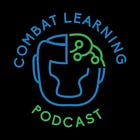Five Views on the Fundamentals of Martial Arts
What are they, exactly? Differing views on martial arts fundamentals, including the thoughts of Bruce Lee, John Danaher, Matt Thornton, Scott Sievewright, and others.
Everyone agrees that the fundamentals are the essence of martial arts skill, but nobody can agree on what they are exactly.
In this article, I outline and briefly comment on five different conceptions of martial arts fundamentals.
Fundamentals as Basic Techniques
Fundamentals as Principles of Play
Fundamentals as Basics + Principles
Fundamentals within Functional Movement Skills
as Regulatory Conditions
as Necessary Strategic Attributes
These are the views as I can best categorize them presently. If you believe you have found a distinctly separate view of fundamentals, let me know.
Overall, I want to document the landscape on fundamentals so we can have clearer, more productive discussions about it.
Fundamentals as Basic Techniques
A core grouping of basic techniques is the most pervasive view of what fundamentals are across martial arts.
The idea is that a small list of basic techniques or tactics make up the core foundation upon which all of a style is to be build. In this way, they are necessary to learn—and learn first, before all other techniques.
The Kukkiwon Textbook, for example, teaches the fundamentals of taekwondo consist of these 13 or 14 basic movements, some of which are not even combative moves:
Ready stance
Horse stance + straight punch
Low block
Forward punch (from front stance)
Front kick
Knife-hand strike
Backfist strike
Middle block
Side kick
Knife-hand block
Face/high block
Inside knife-hand strike (to neck)
Round kick
Reverse punch (from front stance)
The textbook doesn’t use the word “fundamentals” exactly, but it does say this:
The following 13 Taekwondo techniques have been selected as the basic movements of taekwondo to be trained correctly and perfectly so that other techniques may be easily applicable.
…
One should master all those basic movements before become a dan-grader (black belt), otherwise, the practice of distorted movements will deprive the trainee of becoming an excellent instructor in the future.
A permutation of this view—or maybe not—is the idea that the fundamentals make up a series of static drills. This view appears to be promoted by the same “basic techniques” types, so it’s probably not a distinct viewpoint.
Bruce Lee
It’s hard to say exactly what Bruce thought about martial arts fundamentals because he doesn’t appear to define the concept anywhere, directly, in detail.
The mastery of proper fundamentals and their progressive application is the secret of being a great fighter.
- Bruce Lee, Tao of Jeet Kune Do
In Tao of Jeet Kune Do, he leaves a few clues that suggest he thinks of fundamentals as basic, necessary techniques or tactics.
The value of a couple of good hands and fast, powerful kicking depends mostly on their being on a well-balanced and quicky movable base. It is essential, therefore, to preserve the balance and poise of the fighting turret carrying your artillery. No matter in what direction or at what speed you move, your aim is to retain the fundamental stance which has been found the most effective for fighting. Let the moveable pedestal be as nimble as possible. (pp. 143-144)
It’s interesting how close Lee gets to “balance and mobility” as fundamentals, but ultimately settles on a specific fighting stance, a sort of form.
In Tao of Aliveness, I observed that Bruce Lee’s thinking was transcending techniques, but before he died, he had not quite figured out how to get away from them in practice.
In retrospect, all aggressive arm actions, no matter how simple or complex, stem from one or more of three fundamentals: the beat or preparation on the lead band or foot of the opponent, the disengagement, the simple thrust. (p. 193)
There’s also notes that suggest he thought of fundamentals as universal mechanical principles.
In most cases, the same tactic for each maneuver must be drilled on the opposite side of the body for the proper balance in efficiency, but the chief consideration in developing form is to make sure that no fundamental, mechanical principles are violated. (p. 144)
This is similar to Matt Thornton’s view, outlined in greater detail in the next section.
Gracie Barra
Gracie Barra has an entire curriculum named “BJJ Fundamentals” that is essentially lots of basic techniques devoid of conceptual talk.
Not much to see here, honestly.
Fundamentals as Principles of Play
There are a few flavors of this conception of fundamentals. One is to style it as principles that underlie individual techniques; the other is to style principles as true abstractions that describe “fundamentally sound” play.
Matt Thornton
Matt Thornton has historically focused on abstracted mechanical advantages that tend to work across bodies, techniques, skill level, and rulesets.
Those fundamentals, being not what’s most basic, but rather, what’s most important, will, by definition, transcend:
1- culture (history, tradition)
2- bodies (gender, age, size)
3- geography (location, environment)
4- venue (rule set, stakes)
5- time (decade, century, epoch)
from The Finger & the Moon - How JKD Lost its Way
Fundamentals, in his mind, are instantiated through delivery systems,
a series of fundamentals that define skill within a given range. In the case of hand-to-hand combat, that means stand up, clinch, and ground.
How does one find fundamentals? Thornton answers: “Where you find necessity you find a fundamental.”
Matt demonstrates how he communicates his view of fundamentals below.
The thing about Matt Thornton is that he tries to teach techniques in such a way as they communicate his view of fundamentals.
In a functional Martial Art, form will always follow function. The form the movements take within a given delivery system evolved that way, under the pressure of competition. This is, of course, how evolution works.
What actually manifests in practice, though, is more details or different details.
Thornton’s key fundamental in the video above is “maximize connection,” but he ends up explaining the technique far longer, in more dimensions, and in much greater detail than the base example initially offered.
Armchair Violence
First of all, if you don’t follow this channel, you should. He totally shreds the ridiculous factoids, conventions, and traditions of martial arts that remain unexamined.
In this video, he dismantles the “basic techniques” notion of fundamentals. Here’s my favorite quote:
What we think of as fundamentals are often highly limiting, amateur level tactics that are only popular because they’re easier to teach. The basics are easy to explain, and technique basically just gives you something coaches can keep correcting you on.
Instead, he repositions fundamentals as “positioning, strategy, and personal style,” further explaining “when and why are the real fundamentals of striking.”
Music to my ears.
Fundamentals as Basics + Principles (John Danaher)
Danaher’s definition differs from Matt Thornton’s insofar as it is a true abstract that qualifies more as a sort of strategy or overall gameplan.
As Lex Fridman points out in the clip above, Danaher’s conception of fundamentals is basically a meta-strategy that applies to almost any other domain of competition, including war.
That’s not the whole story, however.
Danaher views the fundamentals as skills and concepts, but also, at the same time, deals with fundamentals in terms of specific movements. He locates the core fundamentals in the foundational positions of jiu jitsu as well.
Danaher’s conception of fundamentals is layered and crosses categories. It’s for this reason I put him in a hybrid section of his own rather than the previous section.
My commentary on his view is that it basically takes no stance, nor does it provide much directional or philosophical value. I don’t think you can claim that movements are fundamental when you can also point to deeper, more fundamental concepts that underlie them.
Logically, the movements can’t be fundamental if the concepts are more fundamental than the techniques. Saying that the “fundamentals” envelopes basics and principles is not the same as saying that the fundamentals (principles) instantiate as some techniques (not fundamentals but the product thereof).
The most charitable reading of this is Danaher really means to say that the basics that comprise his view of the fundamentals are actually instantiations of the fundamentals, not the fundamentals themselves, more in line with Matt Thornton’s view.
Fundamentals within Functional Movement Skills
The ecological approach, aka the constraints-led approach, is rising in popularity and adoption across the martial arts world. With it comes a rejection of all previously dominant views of the fundamentals.
Instead of thinking of fundamentals in terms of basic techniques or individual gameplans, constraints-led coaches like to think more in terms of functional movement skills.
Functional movement skills (FMS) are not a set group of skills, strategies, or movement patterns. Definitionally, they are movement skills that work—something that changes as a learner explores and improves and comes into contact with the play style of other learners.
In other words, FMSs are often in flux.
However, there’s something to be said for the “topological” or structural similarities between all or most functional movement skills. As Dr. Rob Gray writes in his book, Learning to be an “Ecological” Coach,
Effective solutions will have a similar “topology” or basic structure that connects the parts involved…effective movement solutions used by athletes for a particular sporting skill (e.g., swinging a baseball bat) will share a general structure or topology. (p. 65)
With that in mind, there are two ways to conceptualize martial arts fundamentals within an FMS view:
(a) as the constraints of the game [i.e., the rule set] influencing the behavior of the athlete-environment system,
and (b) the necessary strategic attributes of the fighter to navigate the athlete-environment system successfully.
Fundamentals as Regulatory Conditions (Scott Sievewright)
Ecological approach to MMA pioneer Scott Sievewright unpacks his changed conception of martial arts fundamentals on his second appearance on combat learning. In Scott’s view, the rules of the game are the fundamentals of the game.
This is very ecological in nature because above all the live practice and performance environments are the chief teachers of how to navigate those environments productively, according to the scientific theory of ecological dynamics.
With this in mind, Scott has moved away from super-specific live practice tasks in favor of broader task constraints. The logic here is that these broader tasks afford more exploration and are more easily self-individualized by learners.
I’ve said for a long time that you should always be moving toward more and more open constraints in your sparring games. And you should be doing this, probably, faster than you think.
Hyper-specific tasks have become a characteristic of the martial arts expression of the constraints-led approach—and they’re wonderful for brand new students—but they quickly become a rate limiter for the overall development of your athletes.
Fundamentals as Necessary Strategic Attributes
In a fantastic (and lowkey groundbreaking) episode of combat learning, muay thai coach Emil Fitoussey articulates a view of fundamentals that I believe is consistent with the FMS view.
It captures the structural elements that underlie all functional movement skills without explicating individual moves, strategies, and tactics.
Emil’s conception follow the same logic as Scott Sievewright’s, but he sets the floor at the necessary facilitative attributes of the fighter to successfully navigate the game rather than the task constraints of the game itself.
Those strategic attributes, for striking, are
Vision
Balance
Distance
A line of sight is necessary to read, respond to, and actively work against your opponent. From an ecological perspective, this continuous use of information is necessary for skilled control of movement and it’s impaired or cut off when you block your own sight via strict shelling guards, turning away, and excessive flinching.
Thus, vision is a necessary attribute of all functional defensive and offensive tactical formations, regardless of the specific configurations and coordinative patterns of the limbs.
Staying upright, obviously, is a precondition of effective footwork and positioning as well as to deliver powerful blows. This fundamental describes an entire spectrum of potential stances, steps, and striking synergies unique to your body without forcing you to mold your movement to a distinct grouping of individual, formally defined stances and movement patterns.
Thus, balance is a necessary attribute of all functional defensive and offensive tactical formations, regardless of the specific configurations and coordinative patterns of the limbs.
Finally, all of martial arts is about distance management in one form or another. Effective distance is an intrinsic feature of all workable tactics, defensive or offensive. The previous two fundamentals interact to support one’s ability to manipulate space for the purpose of scoring hits without being scored upon.
Thus, effective distance is a necessary attribute of all functional defensive and offensive tactical formations, regardless of the specific configurations and coordinative patterns of the limbs.
This view can easily be adapted to grappling as well, perhaps simply by changing vision to “vision + feel,” to account for the increased importance of haptic input from connections.
Next
What about you?
How do you view the fundamentals? Do you fall into one of views outlined above, or would your describe yourself another way? Let me know in the comments!






![The Fundamentals Emerge on Their Own [Paper Review]](https://substackcdn.com/image/fetch/w_140,h_140,c_fill,f_auto,q_auto:good,fl_progressive:steep,g_auto/https%3A%2F%2Fsubstack-post-media.s3.amazonaws.com%2Fpublic%2Fimages%2F673b6b0f-72b9-4a0c-8744-3a5c33b0df13_1456x1048.png)
I use a similar approach to basketball and adopted the same terminology and approach.
Starts with a Game Model. A game model is a set of principles used to observe matches, plan training sessions, communicate with your players to help your players grow, etc.
In the model, there are macro "moments" (standing, guard, pinning...). There are principles of play that govern the goals of each moment. And, within each there may be micro-moments and additional principles of play that govern how they are played.
Beyond that, I also look at fundamentals in terms of basic movement skills, leaning on the ASM model of 10 basic movement skills.
Would Souders' approach fit into category #2?